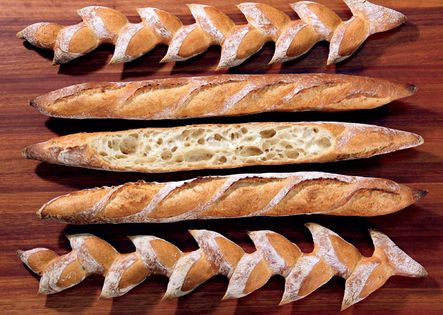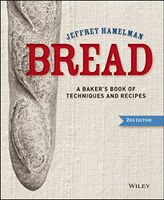Advertisement

Preparation info
- Dough Yield: About
40
baguettes at 14 oz each - Difficulty
Complex
Appears in
Published 2004
A Testimony to the Global Interconnectedness among bread bakers is suggested by the fact that I learned this extraordinary French method from Japanese bakers in Tokyo. There are several unique and remarkable characteristics to these Baguettes de Tradition. First, the rather wet dough is barely mixed, and only on slow speed. What results is closer to batter than bread, and on first making it, a baker could be excused for concluding that the dumpster and not the belly is the destinatio


